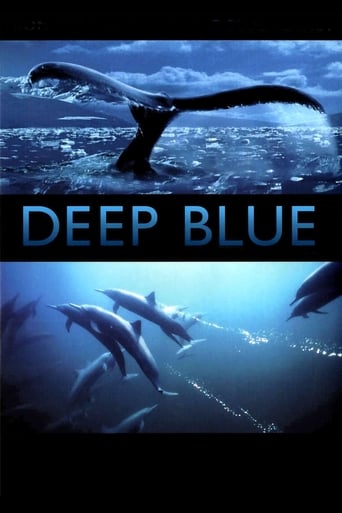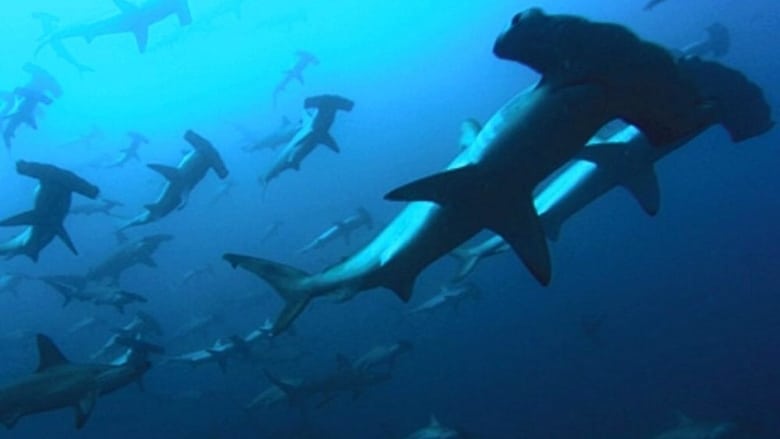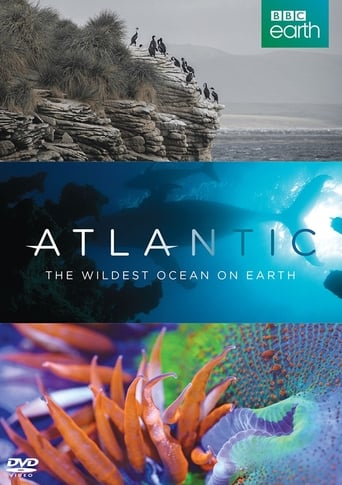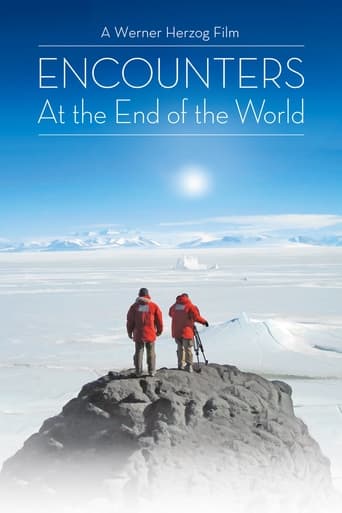Deep Blue (2003)
Deep Blue is a major documentary feature film shot by the BBC Natural History Unit. An epic cinematic rollercoaster ride for all ages, Deep Blue uses amazing footage to tell us the story of our oceans and the life they support.
Watch Trailer
Cast


Similar titles
Reviews
Very disappointing...
Yo, there's no way for me to review this film without saying, take your *insert ethnicity + "ass" here* to see this film,like now. You have to see it in order to know what you're really messing with.
A story that's too fascinating to pass by...
While it doesn't offer any answers, it both thrills and makes you think.
You've seen nature documentaries before but never any so strikingly beautiful as this.It's a tour of the oceans, top and bottom, tropical and arctic. I have no idea of how the crew could have gotten some of these startlingly revealing shots. How, for instance, do you get close enough to a polar bear to film its attempt to catch a beluga whale without disturbing the bear itself? I mean, the bear can't be blind! Telephoto lenses, yes, but these images are crisp and clear, as if shot from ten feet away.It's less "academic" than it is an aesthetic experience. No scientific names. Pierce Brosnan's sparse narration keeps us abreast of what we're watching and what's going on. That pile of big pebbles is actually a group of emperor penguins huddled together for warmth against the antarctic blizzard. You wouldn't know it without the narration, except that every once in a while a penguin's head pops up out of the gray pile and glances around for a few seconds.The musical score is as lyrical and majestic as the visual imagery, which may be good or not so good, but it never becomes cloying. It resembles Debussy as impressionist, all about nature and movement. If this had appeared in, say, 1968, the weed heads would have flocked to it. But these days they're all grown up and don't need to alter their state of consciousness to appreciate what they're witnessing. The film itself will take care of that.It's in no way a tree-hugger movie. Well, Brosnan's narration ends with a question. Are we in the process of destroying this before we've come to understand it? It's a legitimate and completely non-political query.
The beginning of this documentary is devoid of credits. We see dolphins swimming and leaping in the open water and sea birds diving directly into the ocean to snatch a fish. The narrator (Pierce Brosnan) says, "This is a world of constant jeopardy, an endless cycle of birth, death, and renewal." Powerful waves crash into the rocky coast, where the sea lions return to give birth, but unwary seals become prey to predators (the black and white colored killer whales) in the shallows at high tide. Then again, the whales themselves risk being stranded there.More marine life is seen before the view shifts to the coral reefs, "a narrow band of sun-fed life only found in the shallows of the tropical seas." The skeletons of coral polyps – the smallest and most fragile of organisms – form the reef. The darkness is feeding time for some; the night-feeders with built-in sensors have no need of light. Fascinating and colorful sea creatures abound further below the ocean surface, but unfortunately most are not identified. There are poisonous jellyfish and manta rays. Just before the halfway mark of the film the scene moves to the Arctic (polar bears) and also Antarctic (penguins). In the Antarctic the temperature is seventy degrees below zero (-70°F) and the winds exceed one hundred miles per hour. The penguins gather speed in the cold waters before jumping out and landing on sheet ice. Meanwhile in the far north the polar bears search for nesting seals hidden in ice caves situated just below the surface. Thirty-ton gray whales travel six thousand miles to feed in the polar seas. After six hours of jostling, killer whales separate one unfortunate gray calf from its mother and move in when it is thoroughly exhausted. From the surface of the ocean we next enter a subterranean world, the deepest underwater area on the planet and where surface light does not penetrate. Seven miles deep (the Marianas Trench), it is a mystery world of perpetual night. It is a sparsely explored netherworld of odd life forms (again unidentified). The only light emanates from the undersea creatures themselves. Light is used as a lure to attract prey or as a decoy to confuse them. Poisonous hydrogen sulfide gas and boiling water spew forth in some areas. Yet, even near those settings some life forms exist. At film's end we hear that there are only a few thousand blue whales left on earth. The blue whales are earth's largest creatures by far.The narration is limited and the orchestral music appropriate. If you like nature documentaries, you will enjoy this one, although there are several lulls.
I've always been slightly surprised by the popularity of nature documentaries , it seems to be the new soccer . You go into a really rough pub that makes Al Swearengen's place in DEADWOOD look like a tea room and hear from the toughest hardest men in there how much they've been enjoying the National Geographic channel . I always keep silent that I much prefer the History channel over National Geographic . Perhaps the reason so many people enjoy these documentaries is because the skill and manipulative nature of the docu film makers makes these films what they are DEEP BLUE lives up to its name . The water is unbelievably blue as we see dolphins leap out of the ocean in slow motion . Sorry to break this to people but dolphins can and do jump out of the water , but only in real time and never in slo mo . We see a massed army of crabs running around the sands and through some clever editing and sound effects it appears they're having a game of soccer . The music used matches the mood perfectly graceful music is used for graceful animals like dolphins , menacing music is used for sharks and humorous music is used for the penguins You see the point I'm making ? It's a manipulative beautiful documentary featuring animals that the film makers have humanised and will appeal to the more urbane and abstract nature loves amongst the human race . If I sound cynical perhaps it's because the day after I saw this I took a dip in the Atlantic Ocean where I had to dodge aggressive jellyfish and hungry gulls who were very interested in my picnic . I eventually got home with sunburn on my back and blisters on my feet . Nature is a thing of great beauty but it can be painfully cruel too
When I sat down to watch this movie I thought I would be watching another wildlife programme but how wrong was I.The camera shots were out of this world and how they managed them I cannot imagine.The shots of the killer whales separating the baby whale from its mother defies logic and the Emperor penguins shooting out of the water like mini rockets has to be seen.The highlight of the show to me was the deep sea creatures who can generate their own light and the diversity of them can not be imagined.I thought The blue planet was a classic piece of photography but it has no comparison to this film which has both Aeriel and underwater shots of the highest magnitude.I would say to anyone who enjoys wildlife programmes to watch this film .












